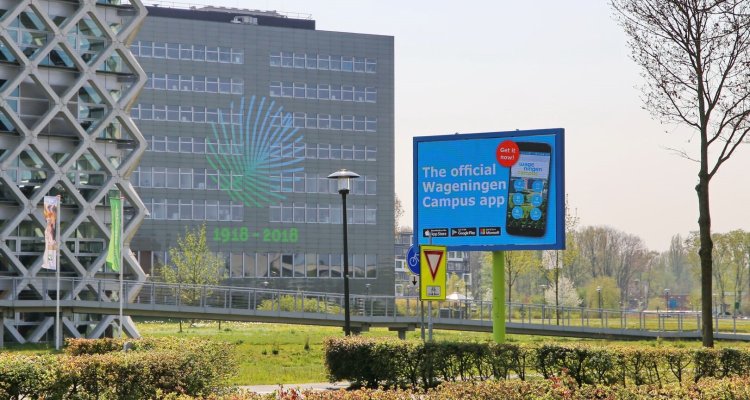
Survey on energy saving at WUR has led to some modifications
Of all the employees who completed the survey on WUR’s energy-saving measures, 36 percent were in favour of all the various measures, which included lowering the temperature, switching off lights and unnecessary equipment, and closing at the end of the year. The other employees had at least one objection. The measure that attracted most dissatisfaction was the lowering of the temperature. What do the results say? And, more importantly, has anything been done with them for this winter?
Last winter, the thermostat was set to 19degrees in every WUR building for the first time. Many of the buildings were closed over the Christmas holidays, and there were more energy-saving measures. Wouter van Leeuwen, WUR Facilities and Services energy coordinator, was keen to canvass opinion on these. So, Tom Kisters, a researcher at Wageningen Economic Research, distributed a survey among all WUR employees in February. This received a response from 849 of them. What was the outcome?
Feeling the cold
In terms of the temperature, a change has been implemented this winter. Last winter, it proved difficult to regulate the temperature in large buildings, which meant that in some areas the temperature was below 19degrees. So the heating has been set slightly higher everywhere so that the temperature is now at least 19degrees virtually all over. This will provide a little extra comfort, because 43percent of respondents were not in favour of this measure.

According to the researchers, the opinions on the lower temperature varied immensely. Van Leeuwen: ‘Every building is different. In addition, the temperature inside a building can also vary from one area to another. This also has to do with other factors that influence the temperature, such as a draught caused by windows, the positioning of the building relative to the wind and son, whether the radiator has a constant setting (2-3) even in winter, and the temperature of the ventilation air. The ways in which people could exert some influence on this themselves also differed.’ However, the survey did send a clear message of dissatisfaction among some of the employees who responded to this question. So the temperature is at least 19degrees now virtually everywhere inside the buildings.
Communication about closing over the Christmas holidays
This year, the communication about closing many of the buildings during the Christmas holidays has also been improved. ‘Last year, we had to put everything in place quickly and the communication did not happen on time,’ concedes Van Leeuwen. This led to complaints among employees in general and also from specific groups, such as PhD students. Kisters then saw this reflected in the survey results. Van Leeuwen: ‘We have now informed people about the closure over the Christmas holidays earlier. And we are encouraging communication per building or per group, such as researchers who have to work in the lab.’
So, common sentiments certainly emerged from the survey, but it was difficult to draw firm conclusions. ‘It is always tricky to measure behaviour and reasons using just a survey,’ explains Kisters. ‘Some people wrote that they worked from home because of the temperature, which was obviously not the intention with this policy. But how often did they do that, and was being cold the only reason? The survey does not give a clear answer to this.’
Gathering experiences is not enough

Kisters would therefore have liked to have linked other data to the experiences, such as how many people were present in each building on working days. This was not about exactly which people, but still it transpired that this information could not readily be requested due to the GDPR. Kisters also refers to the actual temperature data, measured in all sorts of areas inside the buildings. This information is used by the control system but not yet stored for analysis afterwards.
This winter, Van Leeuwen and Kisters want to conduct a new survey among WUR employees. They hope that they will then manage to include at least some of the temperature data. For a number of buildings, it has now been arranged that temperatures are measured, recorded and stored in various places, so that they can subsequently be analyzed. They say that the new survey is important for getting a better understanding of the level of support, including after more than one year. Van Leeuwen: ‘What employees think and then do, we will then put alongside the actual energy saving that the policy delivers.’ After all, one thing is clear: it is about striking a balance between savings and experience.